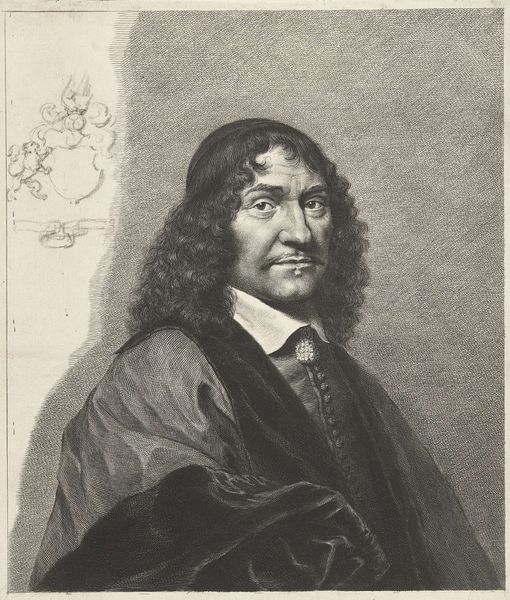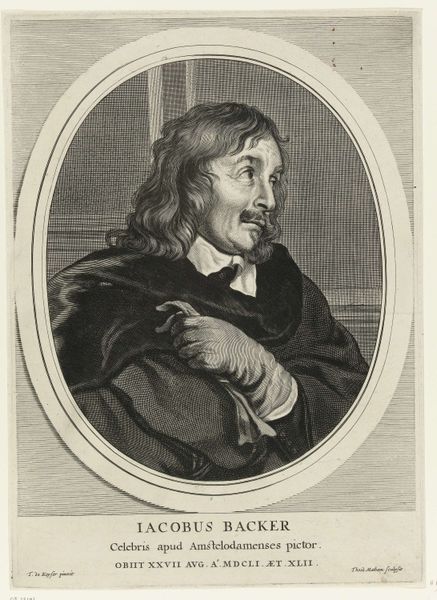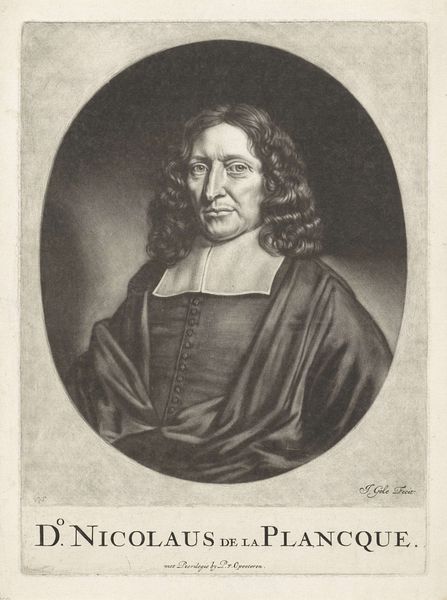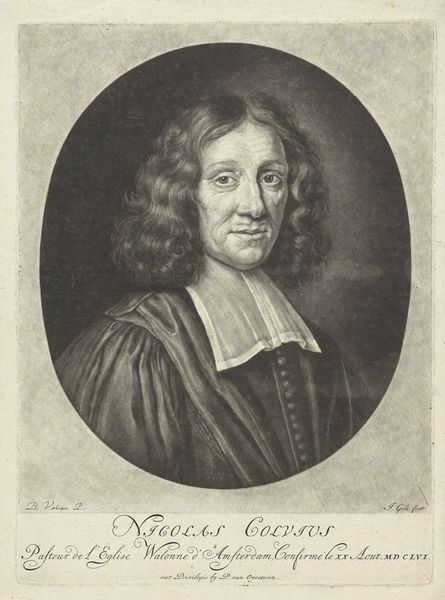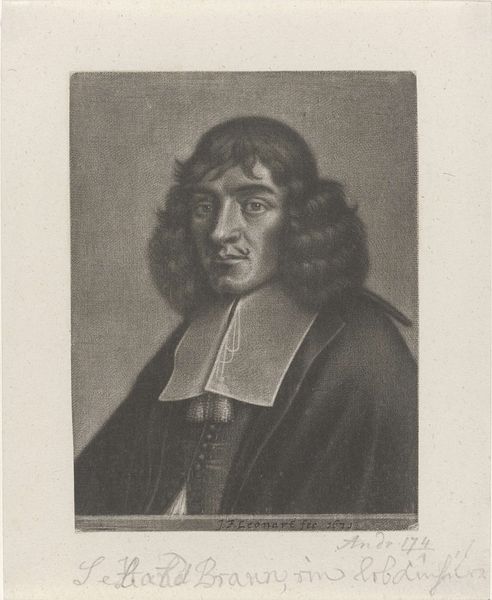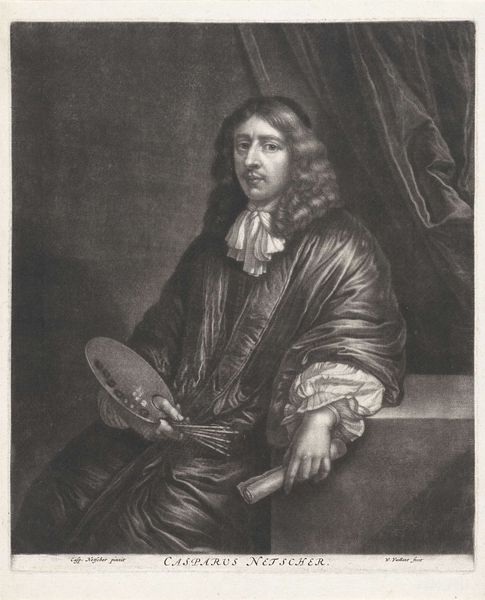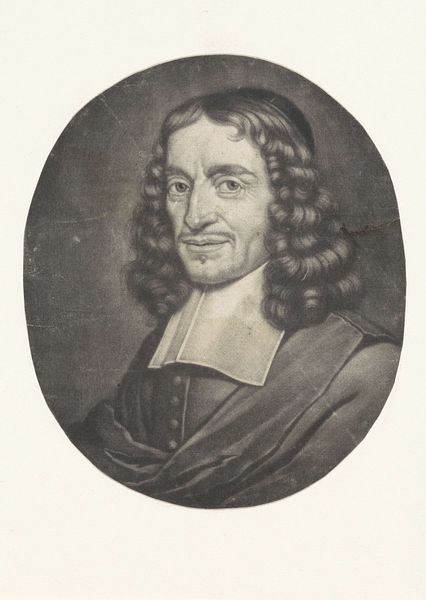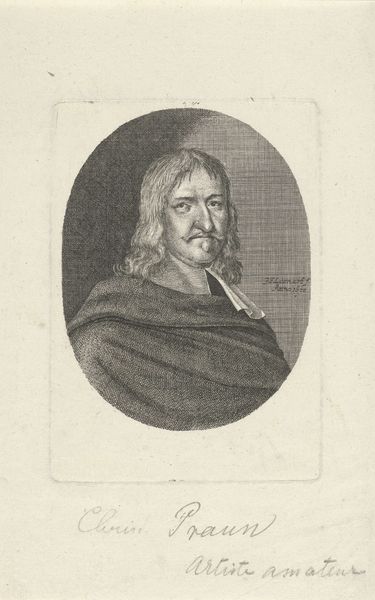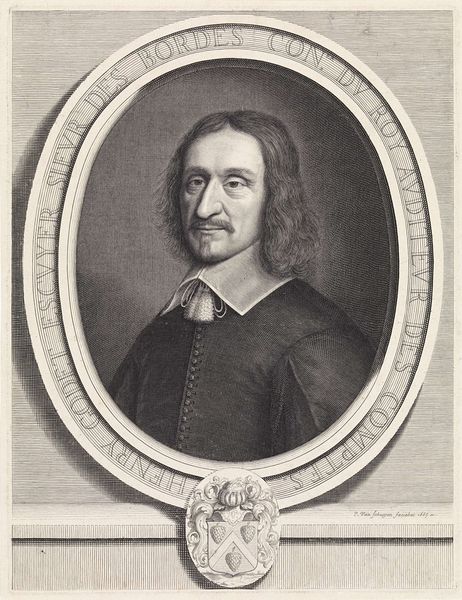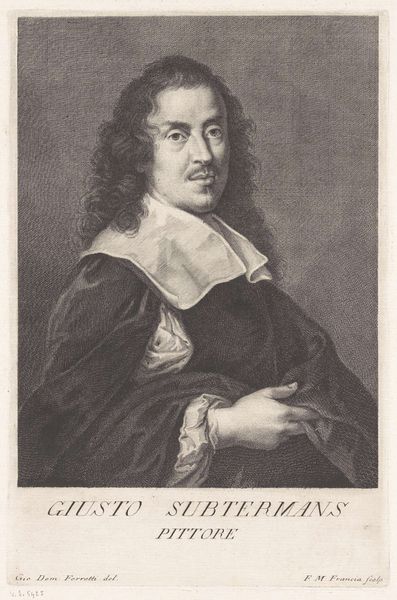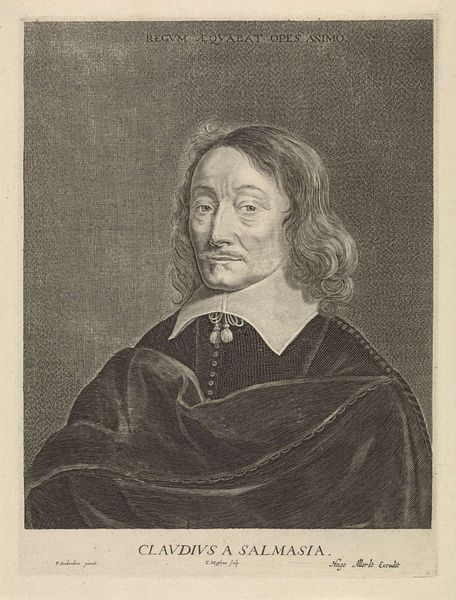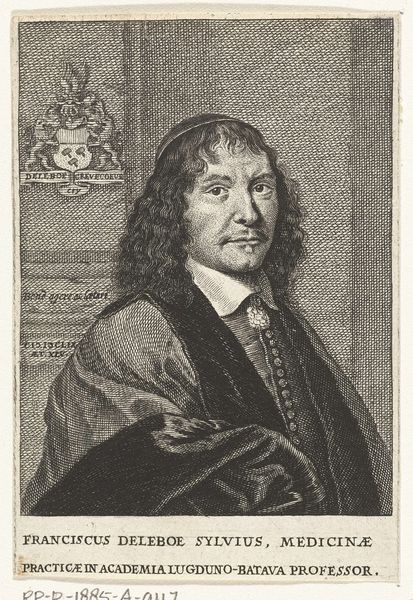
drawing, graphic-art, print, engraving
#
portrait
#
drawing
#
graphic-art
#
baroque
#
dutch-golden-age
# print
#
charcoal drawing
#
engraving
Dimensions: height 227 mm, width 178 mm
Copyright: Rijks Museum: Open Domain
Curator: Here we have Wallerant Vaillant’s “Portrait of Govert Flinck,” likely created between 1658 and 1677, an engraving housed here at the Rijksmuseum. Editor: My immediate impression is one of subtle melancholy. The somber tones and the subject's introspective gaze give the piece a rather serious mood. The dramatic chiaroscuro, with light and shadow in stark contrast, enhances this feeling, doesn't it? Curator: It certainly does. Considering the tumultuous socio-political climate of the Dutch Golden Age, portraiture served as a means of asserting identity and status within a rapidly changing societal structure, especially during the years of instability surrounding the Franco-Dutch War, which affected artistic patronage quite profoundly. Editor: Yes, and Vaillant's technique is masterful. Observe the rendering of texture—the velvet robe, the soft curls of hair—all achieved through such intricate line work. The diagonal composition is quite compelling as well. The subject's arm creates a powerful directional line. Curator: Exactly. Flinck, a renowned painter himself, belonged to a social echelon experiencing transformation. These portraits of artists reflect how notions of genius and artistry evolved against mercantile interests. Flinck started out a Rembrandt's workshop and was also known for paintings with great narratives based on historical and mythological allegories. Editor: And it is the symbolic weight—the scroll in his hand perhaps alluding to artistic skill or intellectual prowess. It seems Vaillant chose the engraving medium to offer reproducibility and thus solidify Flinck's stature through distribution. The portrait, both aesthetically refined and emotionally stirring, immortalizes him within a specific social and historical narrative. Curator: This narrative goes beyond individual acclaim to the positioning of art, artists, and their self-image within the Dutch societal fabric, grappling with questions of worth and memory, subjects ever ripe for reassessment. Editor: Precisely. Ultimately, Vaillant’s artwork presents Flinck, his essence—frozen for eternity in ink and paper, but perpetually reinterpretable across eras.
Comments
No comments
Be the first to comment and join the conversation on the ultimate creative platform.
